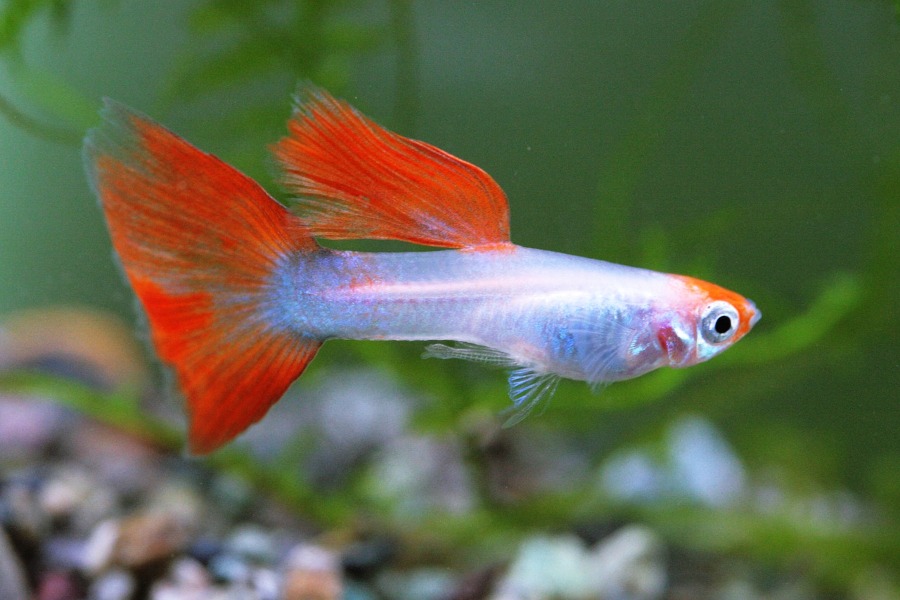Guide
Putting fish to the aquarium correctly: How to make a smooth move
When you buy new fish for your aquarium, the anticipation is usually great. After all, the new inhabitants enrich the tank with life, colour and movement. However, to ensure that the animals really feel at home and stay healthy, a careful and stress-free move is crucial. After all, transport and acclimatisation to the new home are among the most critical moments in the life of an aquarium fish. In this blog article, I will show you how to introduce your new protégés to the aquarium correctly, with as little stress as possible for humans and animals.

Preparation begins with the purchase
Before the fish even move in with you, you should make sure that the aquarium is fully run in. A freshly filled tank needs time to develop a stable biological balance, usually at least two to four weeks. During this time, beneficial bacteria form that break down waste products and ensure stable water values.
Also make sure that the water values (temperature, pH value, hardness) match the requirements of the fish species you want to buy. Inform yourself well in advance or speak to an experienced dealer or breeder. Not every fish is suitable for every aquarium.
How to transport the fish correctly
When you buy the fish, you will usually receive them in a transport bag filled with water. This should be filled with oxygen and carefully sealed. If possible, transport the bags in a dark thermobox or cool bag to reduce stress for the animals and keep the temperature stable.
Particularly in summer or winter, it is important to avoid large temperature fluctuations. A short transport route is therefore ideal. Plan your route so that you go straight home and don’t run any errands.
Important: Never transport too many fish at once, the fewer animals in the bag, the better the oxygen supply and the lower the stress.
Getting the fish used to the aquarium properly
When you get home, you should take your time. The introduction of the fish should not be rushed. It is a sensitive process in which the temperature and water chemistry must be equalised.
Step 1: ‘Float’ the bag in the aquarium
Place the closed bag with the fish on the surface of the aquarium water for about 20 to 30 minutes. This allows the temperature in the bag to slowly equalise with that of the aquarium water. Do not open the bag during this time!
Step 2: Slowly equalise the water
After temperature equalisation, carefully open the bag and pour a little aquarium water (about a shot glass full) into the bag every five to ten minutes. Repeat this over a period of 20 to 30 minutes. This will slowly acclimatise the fish to the water values in the aquarium, such as differences in pH value, hardness or CO₂ content.
Step 3: Carefully introduce the fish
Now the time has come: Carefully catch the fish out of the bag with a clean landing net and carefully place them in the aquarium. Do not pour the transport water into the tank as it may be contaminated or contain germs.
Let the landing net slide very slowly into the water and gently release the fish. Avoid hectic movements and ensure that the aquarium remains quiet, preferably with the lights dimmed or switched off.
What happens after insertion?
The fish now need to rest. In the first few hours, sometimes even days, many animals will hide, not eat or behave very quietly. This is normal. Watch your new flatmates carefully, but without disturbing them. Make sure they are breathing normally, have no obvious injuries and are gradually taking an interest in their surroundings.
You should wait at least a few hours, sometimes even a whole day, before feeding for the first time. Only offer a small amount and remove uneaten food immediately so as not to pollute the water unnecessarily.
Place fish in the aquarium correctly – Conclusion
A successful start is crucial for the well-being of your new aquarium inhabitants. By taking sufficient time for the transport and acclimatisation and proceeding carefully, you will ensure that the fish feel safe and are well received. Remember: it’s an exciting day for you, but it can be life-changing for your fish. The smoother you make the transition, the quicker you will be rewarded with healthy, vital animals that will soon be moving around your aquarium as a matter of course.
- Aquaristics in Greece: Between sun, sea and modern technology - 14. October 2025
- Palaeontology: Hippopotamuses in the Ice Age – Colossal creatures roamed the Upper Rhine Graben - 13. October 2025
- Discovery of a new species of dinosaur with a sword-like snout causes a stir - 12. October 2025